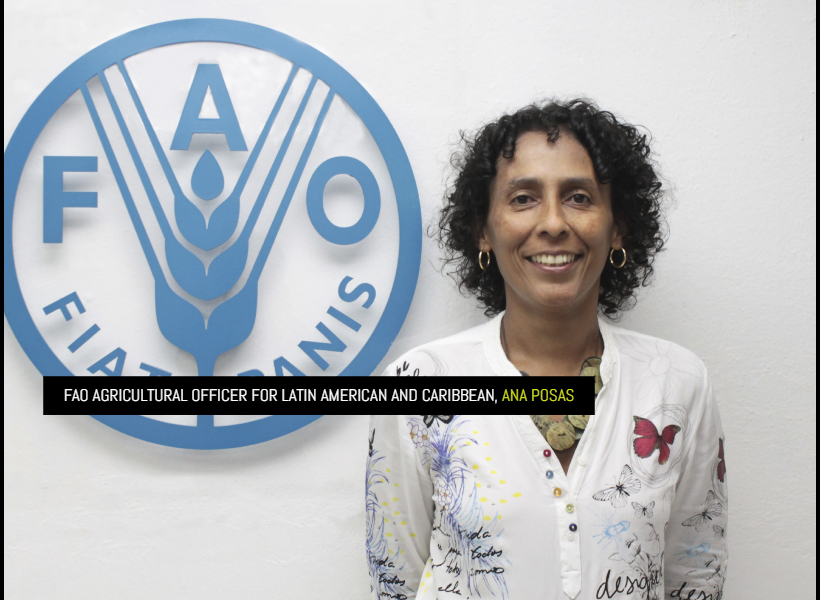By Ana Posas, FAO Agricultural Officer for Latin American and Caribbean
A few days ago, the United Nations Conference on Biodiversity (COP15) concluded with a historic pact. Dozens of countries pledged to protect 30% of their land and sea surface by 2030 to preserve biodiversity, which represents an unprecedented achievement for our forests, our fauna, our seas, and for the soils we walk on.
Taking care of the life in soils allows us to maintain soil carbon (key to having better productions), maintain the humidity and water reserves of our territories, and therefore safeguard the balance of nature and achieve a better production of sustainable food.
There are more than 1,000 species of invertebrates in a single m2 of forest soil, and one gram of soil can harbor millions of living beings and several thousand species of bacteria.
But despite their immense strategic value, soils are under great threat, mainly because of unsustainable management practices, erosion, pollution, and urbanization.
FAO estimates that 14% of the planet’s degraded land is in Latin America and the Caribbean, reaching 150 million people. In Mesoamerica, the proportion rises to 26% of the territory.
The main causes of degradation are water erosion, intensive agrochemical applications and deforestation, which are evidenced by a reduction in vegetation cover, a decrease in fertility, pollution, and the impoverishment of crops.
We cannot stand by and let this happen. We need to promote respect for the biodiversity of our soils to ensure a future in which we can have access to adequate, sustainable, and healthy food production.
The FAO figures show that we can produce up to 58% more foodthrough sustainable soil management.
For this reason, the Food and Agriculture Organization of the United Nations (FAO) has a series of projects focused on this topic.
This year, as part of a series of talks, we shared Colombia’s experience with aquatic plants extracted from the Ubaque lagoon, which has made it possible to reduce water pollution due to excess nutrients and, at the same time, provide organic matter to the producers.
In Mexico, Itson University’s COLMENA initiative has successfully preservedthe microbial diversity associated with land-use change by reducing soil degradation. In Argentina, an experiment presented through the incorporation of bacteria and stubble management has improved the carbon balance of soils.
In Trinidad and Tobago, one study confirmed the importance of improving soil pH to improve cassava tubers’ fertility, yield, nutrition, and quality after harvest. In Brazil, the Brazilian Agricultural Research Corporation (EMBRAPA) shared its experience with organic nitrogen fixation bacteria, saving the country US$14 billion annually in soybean cultivation.
In Chile, the Institute of Agricultural Research (INIA) has promoted the application of organic material of animal and vegetable origin in crops and fruit trees, reducing costs; and in Peru, the company BIOEM has promoted the use of biofertilizers created with a mixture of fungi, bacteria, and yeasts.
We should look closely at these and other successful examples that seek to safeguard soil biodiversity.
Safeguarding soil biodiversity today is the key to our future.













